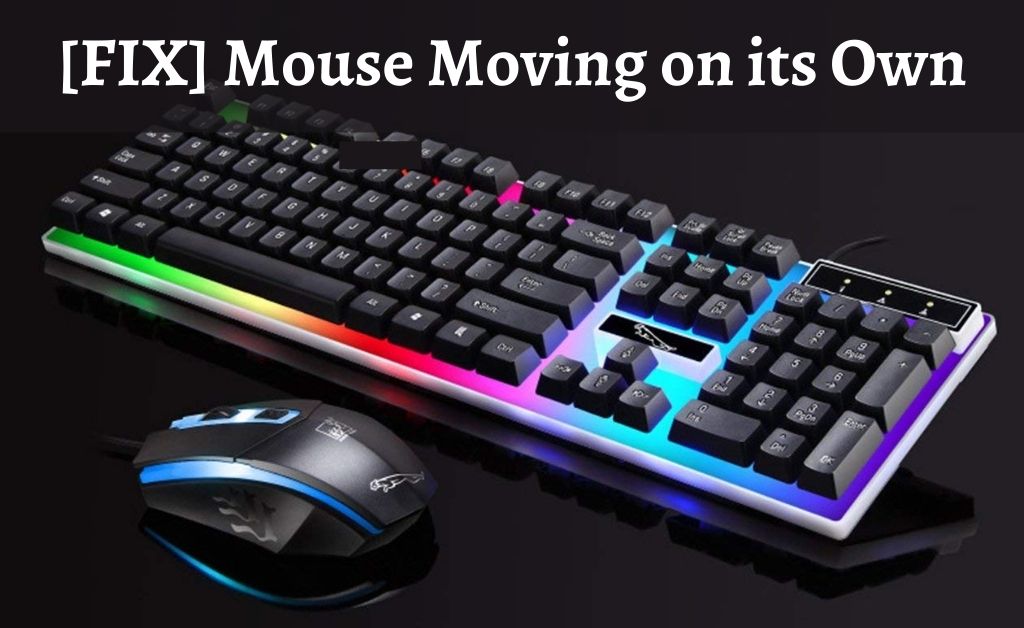
Reportedly, people who have recently installed Windows 10 are encountering an annoying issue – the mouse moving on its own i.e. the cursor on the screen. In addition to that, the pointer is also jumping here and there, and automatically selecting programs. The tech experts have analyzed it deeply. They said that the movement of the mouse pointer is in a horizontal and vertical direction. And, the issue might be taking place due to the presence of malware.
If you have scanned your system and there was no malware but still encountering the issue, you can check the hacks given below.
-
Test and Replace the Faulty Mouse
Before investigating the system or the applications, you have to check the mouse first. Plug out the mouse and try to use it on another system. If the input device works well, then your previous system has some glitches. And, if the problem continues, then the mouse is faulty. You have to replace the mouse with a new one.
-
Battery Replacement
If you are using a wireless mouse, then replace the batteries. When the battery is running out of fuel, you can find the cursor of the mouse moving on its own. The simple solution is to replace the battery. Make sure the new battery is compatible with the wireless mouse.
-
Necessary Changes in the Touchpad Delay
When the mouse cursor moving on its own, you need to focus on the touchpad. In laptops, the touchpad works as the mouse. Interchanging the delay in the touchpad might be an effective solution. Visit the Settings and navigate through the Devices section. Then, select the Touchpad and the desired sensitivity level.
-
Use only External Mouse
If you are working on a laptop and the mouse moving on its own, then it’s better to disable the touchpad. Open the Pointing Device properties and select the Touchpad tab, hit on Disable. It’s obvious that you cannot work without the help of the mouse. Attach an external mouse (USB) and hopefully, the issue will be resolved. If the external mouse behaves in the same way, then eject it and enable the touchpad.
-
Scan for Malware and Viruses
Certain abnormal behaviour like the mouse moving on its own can take place because of the presence of malware or viruses. So, the straightforward solution is to scan the entire system with the help of an anti-malware or anti-virus. This will remove viruses or malware and also the files that are infected. Further, it will also repair them.
-
New Mouse Drivers
Outdated and corrupted mouse drivers can lead to the cursor moving on its own. As usual, navigate through the Device Management window and search for the Mouse and Other Pointing Device option. You might also find the Synaptics PS/2 Port touchpad option. Don’t worry, both are the same, update the driver by right-clicking on the option. In addition to that, you can also search for the drivers automatically from the Microsoft database.
-
The Integrated Error Detection Manager
To detect any type of internal system error, the dedicated Windows troubleshooter will always be helpful. After running the tool, it will detect all the internal errors. Carefully look at them and find out the source. If you can find out the error then note the reason mentioned right beside it. Now, do what needs to be done to resolve the issue.
-
Remove Other Wireless Device to Avoid Conflicts
Apart from the mouse, if other wireless devices are connected to your computer, the device priority might clash. Thus, to keep the mouse connected and workable, disconnect all the other wireless devices. Now, check whether the mouse is functioning accurately.
-
Shut Down the Controller Programs
Let’s say you are playing a game on a gaming console that is connected to your computer. The controller uses multiple programs that are installed on your computer. And, this might lead to the abnormal functioning of the mouse. Pause the game, move to the Task Manager and close the tasks related to the controller.
Is the Audio Manager Involved?
Most likely the audio manager is also responsible for the abnormal behaviour of the mouse. The reason might be some internal glitches or driver conflicts. Therefore, you need to shut down the Audio Manager and check whether the issue is fixed or not.
How can you prevent errors?
Software and hardware errors are inevitable, but you can try to prevent them. The first and foremost step is to update your OS. The process will not only help you to download the recent version.
Taking care of the registry and other system paths is also important. To do so, you just need to eliminate all the cache or the junk files to free up the volatile as well as the non-volatile memory. This might resolve the cursor of the mouse moving on its own error.
When you start your system, most likely there are several programs that boot up automatically. Thus, with the help of the Task Manager, you either have to stop those processes every time or restrict them from booting up at the computer startup. Further, ask the tech experts and get their valuable analysis and suggestions.
